Why the West Somerset Railway is Our Biggest Asset
| Author: Jack Morris-Edwards | Published: 15th July 2011 11:24 |
At almost 20 miles long, the West Somerset Railway is the longest heritage railway in England. Originally opened in March 1862, the line ran from Watchet to Taunton. By 1974 the line had extended all the way to Minehead which is where I start my journey today as the steam train rolls out of the station.
As the main locomotive base for the West Somerset Railway Minehead station boasts a turntable, an engine yard and a café.
The train chuffs into the next station within what feels like only a matter of seconds. Dunster station - situated in the Dunster marsh area - is just as picturesque as the village itself. Leaving Dunster station behind I encountered beautiful views of Conygar Tower and Dunster Castle from a slightly different angle to how I've ever seen them before on the roads.
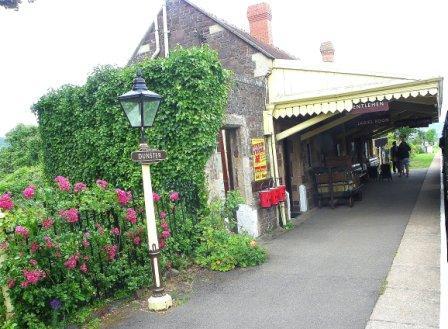
Blue Anchor station is equally as pretty as Dunster station and is situated right next to the sea front. As a train obsessed child we used to regularly take trips on the West Somerset Railway, but this is the first time I have been on these trains for at least four years. Although not all the old excitement of riding these trains as a much younger boy comes flooding back I am still greeted by a familiar feeling of happiness which these heritage lines can bring back to people. For me and for most people who go on these trains it just feels like a pleasant change from travelling on the modern cars and buses to a more leisurely pace, trundling along the tracks that have been ridden on since the mid 1800's.
Before becoming a heritage line this railway was used as a branch line for the Bristol & Exeter Railway Company from its opening in 1862 until it was absorbed into the Great Western Railways in 1922. It remained like this until the nationalisation of the railways after the war where it then became part of British Rail. The line was a key factor in helping Minehead become a major tourist spot in the south-west.
By 1962 (100 years after its opening) steam trains were being swapped with diesels and many branch lines were being closed down to save money. By March 1970 the Minister of Transport had decided that the West Somerset branch line had to close. The last train left Minehead on 2nd January 1971.
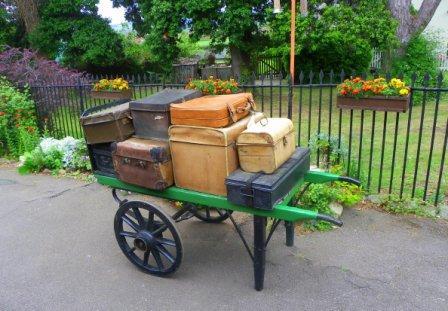 Since the railway's reopening as a heritage line in 1974 it has also been used for things other than transporting holiday makers and locals on a leisurely day out. In the harsh winter of 1978 from the 17th-20th February the ‘Blizzard Specials' ran between Bishops Lydeard carrying mail, food and people stranded by the severe weather. The line was also used to carry stone from the Mendips for the Minehead sea defences in 1997 and even as recently as 2010.
Since the railway's reopening as a heritage line in 1974 it has also been used for things other than transporting holiday makers and locals on a leisurely day out. In the harsh winter of 1978 from the 17th-20th February the ‘Blizzard Specials' ran between Bishops Lydeard carrying mail, food and people stranded by the severe weather. The line was also used to carry stone from the Mendips for the Minehead sea defences in 1997 and even as recently as 2010.
I reached Watchet station, the original end of the line before its extension to Minehead. The other passengers on the train are of varying ages but all seem to be enjoying themselves. A main attraction for families is the fact that many youngsters have an interest in trains. I can say from past experience that programmes like Thomas the Tank Engine are often the reason for this interest.
Williton station is often a favourite among the enthusiasts and it is easy to see why. It is almost as pretty a station as Dunster and Blue Anchor but has a busier feel like Minehead station thanks to the trucks and carriages alongside the main track.
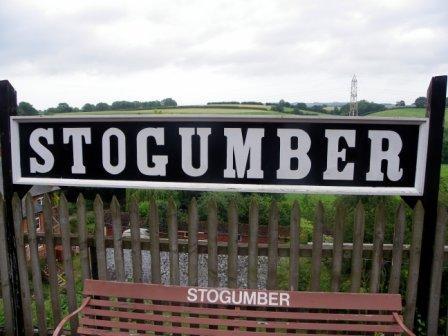 Stogumber and Crowcombe Heathfield stations follow in the usual trend set by the previous stations; picturesque, furnished with hanging flower baskets and benches and reminiscent of Britain's railway heritage.
Stogumber and Crowcombe Heathfield stations follow in the usual trend set by the previous stations; picturesque, furnished with hanging flower baskets and benches and reminiscent of Britain's railway heritage.
I reached the end of the line at Bishop's Lydeard where I swapped from a steam train to a diesel train for my journey back. The carriages were much less busy than those in the steam trains. Diesels still are popular with tourists, but they just aren't quite as desirable as their steam powered ancestors.
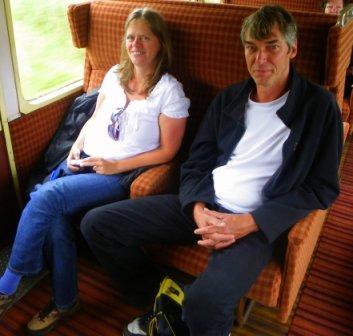 The West Somerset Railways attracts tourists from all over Britain and even from other countries. Peter and Erica from the Netherlands were enjoying their first ride of the West Somerset Railway. They said that they were drawn to the history of the track itself. Erica said "It's nice to be on the train and imagine what it was like all them years ago". With the diesel's typical 1960's style upholstery covered in cheques and stripes it is easy to see where she is coming from. Sat in that carriage I could have easily transported myself back to the 1960's to the days when those brand new diesels had just replaced the steam engines that had owned the tracks for the previous century or so.
The West Somerset Railways attracts tourists from all over Britain and even from other countries. Peter and Erica from the Netherlands were enjoying their first ride of the West Somerset Railway. They said that they were drawn to the history of the track itself. Erica said "It's nice to be on the train and imagine what it was like all them years ago". With the diesel's typical 1960's style upholstery covered in cheques and stripes it is easy to see where she is coming from. Sat in that carriage I could have easily transported myself back to the 1960's to the days when those brand new diesels had just replaced the steam engines that had owned the tracks for the previous century or so.
The West Somerset Railway would not be able to function at all without the tireless help of all its volunteers. A large percentage of the people who volunteer are retired men with a long time interest in trains which spanned back to their childhood. As well as a love of locomotives many volunteers state their reasons for volunteering at the West Somerset Railway are because of the special beauty of the line and its surrounding countryside.
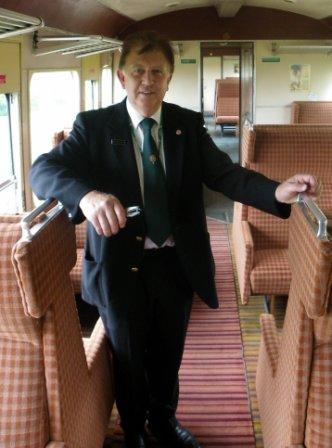 Travelling ticket inspector Mike Pepler has worked on the railway for just over a year. I asked Mike what he enjoyed most about working on The West Somerset Railway and he said: "I thought the best bit of working here would be the trains but actually it is meeting people and knowing that they are enjoying the WSR experience".
Travelling ticket inspector Mike Pepler has worked on the railway for just over a year. I asked Mike what he enjoyed most about working on The West Somerset Railway and he said: "I thought the best bit of working here would be the trains but actually it is meeting people and knowing that they are enjoying the WSR experience".
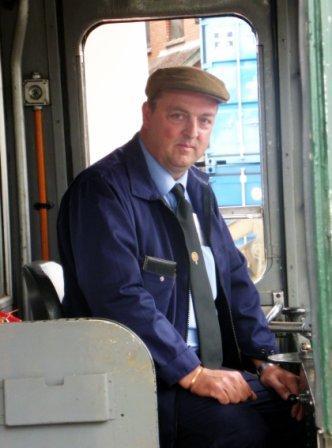 Diesel train driver and signalman Fenton Fouracer has worked at the West Somerset Railway from 1975-1978 and then again from 2005 and is still working today. He says he has always been interested in trains since he was a child and loves driving the trains. To become a diesel train driver it usually takes around 15-20 days of training. Fenton says "Anyone can make the train go. The skill is in making it stop".
Diesel train driver and signalman Fenton Fouracer has worked at the West Somerset Railway from 1975-1978 and then again from 2005 and is still working today. He says he has always been interested in trains since he was a child and loves driving the trains. To become a diesel train driver it usually takes around 15-20 days of training. Fenton says "Anyone can make the train go. The skill is in making it stop".
As my journey concludes back in Minehead Station where it began a couple of hours ago I reflect on the trip I have just finished. It was a journey that has transported me back to steam's heyday but also reminded me of my younger days when I was a much more frequent visitor to the railway. The West Somerset Railway really is something we are lucky to have so close to home.
Report this article as inappropriate
Comments
You need to log in before you can do that! It's only a quick registration process to join the AMA network and completely free.



 Help
Help




 Loading...
Loading... Help
Help